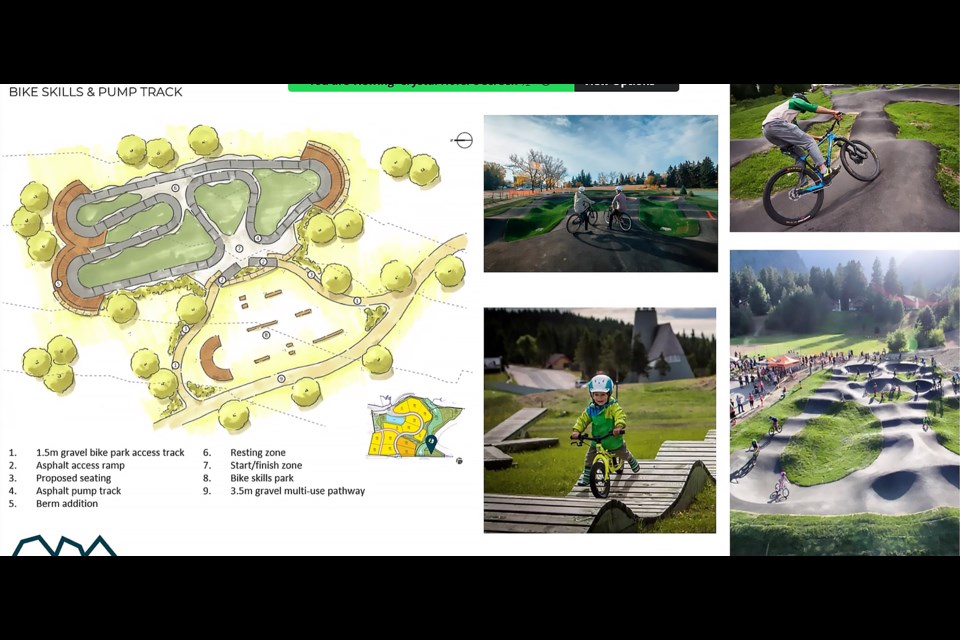CANMORE – Planned construction of Three Sisters Village will take another step forward this week.
Canmore council will pass the conceptual scheme and land use bylaw amendments for the first phase of the Three Sisters Village area structure plan at its Tuesday (April 23) special meeting.
The first phase includes 700-1,075 residential units, though the first builds are unlikely to be completed until 2026. The plan includes a bonus density toolkit, which allows more residential units to be built with more affordable housing coming with it.
The plan mandates a minimum of 10 per cent affordable housing, but that could increase to as much as 20 per cent. Provincial legislation doesn’t permit a municipality to require affordable housing.
“Density bonuses shall facilitate the advancement of Town policy and goals that are beyond a municipality’s ability to require through bylaw,” states a staff report. “Should one development phase as identified within the ASP not use its maximum density permitted, the additional density shall be transferred to other phases covered by this overlay, provided that the maximum number of residential units does not exceed 5,000 within the Three Sisters Village area structure plan as a whole.”
The Three Sisters Mountain Village Properties Limited (TSMVPL) owned land will be parcelled off to potential developers to purchase.
The first phase will include about 30 per cent of open space such as an off-leash dog park, playgrounds, a bike pump track and additions to Canmore’s trail network. It totals 29.1 hectares in the northeast part of the ASP, with townhomes, stacked townhomes, apartment buildings and tourist homes.
The Three Sisters Village ASP includes five more phases, including a hotel district, innovation district and village centre, and is largely residential based, but includes no single-family homes.
Expected to take two to three decades, the full buildout of the plan will see between 3,000-5,000 residential units and add 5,500-10,000 visitors and permanent population. It would have up to 602,000-square-feet of retail and business space and about 190,000 square feet of indoor recreation and entertainment space, with 75 hectares of open space.
The Smith Creek ASP will lead to an estimated population of 2,200 to 4,500 people and includes about 1,000 and 2,150 residential units. The ASP includes upwards of 75,000-square-feet of light industrial and business space and roughly 125,000-square-feet of retail and commercial space for local services.
Work on the conceptual scheme and land use bylaw amendments for the first phase of Smith Creek ASP is ongoing.
The Three Sisters Village and Smith Creek ASPs will include residential, commercial and light industrial space as well as parks, playgrounds and bring Canmore to its long-planned population of about 30,000 people.
According to the conceptual scheme, the first phase will have an estimated population of 1,425 to 2,133, depending on the density. The density is anticipated between 50-110 units per hectare.
The approval of the conceptual scheme means TSMVPL can proceed with subdivision application and development permits.
“The purpose of a CS is to ensure the orderly subdivision and development of an area of land,” states the staff report. “It is a non-statutory plan that provides a framework to inform land use and subdivision applications as they relate to the future phases of subdivision and development of lands within an approved area structure plan.”
The conceptual scheme was submitted Dec. 20, 2023, with studies examining undermining, transportation, water and sanitary, wildlife monitoring and steep creek hazard analysis and mitigation.
“Administration are satisfied that the CS and the supporting studies are generally consistent with the relevant policies and plans in the ASP.”
Council voted against the Village and Smith Creek ASPs in 2021. However, after TSMVPL appealed the decisions and the cases were heard by the Land and Property Rights Tribunal, the Town was ordered to adopt both plans in 2022.
The Town's appeal of the decision, which was heard by the Court of Appeal in 2023, was denied and the tribunal’s rulings found to be legal.
Canmore council ultimately adopted both ASPs last October.
Couns. Joanna McCallum, Jeff Hilstad and Karen Marra are named in an ongoing civil suit from TSMVPL and have recused themselves from prior TSMVPL-related issues on the two ASPs.
The staff report, however, noted since the conceptual scheme and land use bylaw amendments are different from the lawsuit they were able to vote.
Though polarizing in the community, both the tribunal and Court of Appeal found the ASPs were legal and in line with the 1992 NRCB decision.
All future land use bylaw and Municipal Development Plan amendments will not need to go through a public hearing since council is legally required to approve plans that align with the NRCB decision.
The Îyârhe (Stoney) Nakoda First Nation filed a court application late in 2023 against the Town and Alberta’s Ministries of Municipal Affairs and Indigenous Relations to void the bylaws that led to the ASPs being adopted. TSMVPL has asked to be an intervenor, but has yet to hear a decision from the courts.
The Îyârhe Nakoda First Nation and Bow Valley Engage also asked the Alberta government to complete a new environment assessment for TSMVPL’s lands, but it was denied due to it aligning with the 1992 NRCB decision and the province not having jurisdiction.
THREE SISTERS VILLAGE ASP PHASE 1
- 29.1 hectares (25.27 hectares for developable land use)
- 11.15 hectares for residential (44.1 per cent of developable land use)
- 6.53 hectares for municipal reserve (25.8 per cent of developable land use)
- 3.8 hectares for environmental reserve
- 3.42 hectares for roads (13.6 per cent of developable land use)
- 2.26 hectares for tourist homes (8.9 per cent of developable land use)
- 1.91 hectares for public utility lots (7.6 per cent of developable land use)


